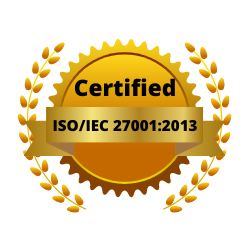by Katie Lacy | Mar 22, 2021 | Startup Growth
FrontSpin has always put a priority on protecting its customers’ data. The company has worked vigorously to meet the strictest security requirements in the industry. Those efforts have resulted in the company becoming ISO/IEC 27001:2013 certified at the end of 2020. FrontSpin has always valued security and always placed efforts in continuously improving its security processes. This internationally recognized certification demonstrates that they have best practices and a management system in place to protect the confidentiality, integrity, and availability of their client’s information.
ISO/IEC 27001:2013 specifies the requirements for establishing, implementing, maintaining and continually improving an information security management system within the context of the organization. It also includes requirements for the assessment and treatment of information security risks tailored to the needs of the organization.
“At Frontspin, we value customer data and security,” said Mansour Salame, CEO of FrontSpin. “The ISO certification, as well as the work we did to ensure we are GDPR and CCPA ready, validates the values we have always had of protecting sensitive information. Now customers worldwide can feel confident about using the FrontSpin ISO/IEC 27001:2013 certified platform. Constantly improving our processes is important to us.”
Questions about FrontSpin’s certifications can be directed to their CISO through security@frontspin.com, who is responsible for governing implementation and oversight of all ISO controls.
by Mansour Salame | May 20, 2016 | Inside Sales, Inside Sales Team, Sales Management, Sales Process, Startup Growth
A software startup in Silicon Valley is tracking to beat $3 million in revenues in its first full year of operation. It is time to come up with a sales plan for next year. The board had been encouraging the CEO to ‘“step on the gas” and aim for $9 million next year.
The CEO, CFO, and VP of Sales gather around the polished glass table in the newly redecorated conference room to finalize the business plan for the next year. The CEO gets the ball rolling, “So is everyone comfortable with this plan to reach $9 million next year?” The VP of Sales says he’s onboard, but that tripling sales will also mean tripling the sales team. The CFO chimes in saying that means 16 new hires in sales — another ten account execs and six more SDRs — and 14 new hires in other departments to support the growth.
The board approves the aggressive growth and sales plan and the required spending. They congratulate themselves that now they can raise an up round to support the growth, and the hiring spree begins.
The first quarter results are a near miss, but the company manages to close its round of funding based on the growth plan. The second quarter results diverge even more from the sales plan. When the third quarter results show annual sales growth is “only” 90% to date, the VP of Sales is called on the carpet to explain, and all he can offer is that it’s taking more time than expected for the sales team to hit their stride. What went wrong?
B2B giant salesforce.com has made growth look easy, mushrooming into a $7 billion company in just 15 years since it was launched. But planning for growth is never that easy, especially for B2B tech startups. The above scenario is actually quite common in Silicon Valley, as new firms are often pushed to grow faster than they should. According to the Startup Genome Report 92% of Startups fail and 74% of those failed due to premature scaling, ie hiring and spending money on sales and marketing before they are ready to. Mark Leslie and Charles Holloway break down the whys and wherefores of the “Organization sales learning curve” in their seminal 2006 article in HBR.

Sales Plan: The Sales Learning Curve
When you dig into cases where sales growth does not even come close to expectations, you often discover the real problem is that the sales team was not performing at capacity before the ramp up. One common situation is that you meet sales goals your first year because two of your five sales reps are crushing their quota, but your other three reps are underperforming. Then in year two, your two superstar reps also start to underperform. Why? Because the CEO had been feeding them prime leads and deals, and the easy deals are all gone now.
If your sales team is not really performing, then adding five new AEs will not result in doubling sales bookings, but more likely in eight or nine reps not making their quota.
If your sales team is not really performing, then adding five new AEs will not result in doubling sales bookings, but more likely in eight or nine reps not making their quota. You must be certain you can actually derive value from a larger team before adding sales capacity.
The recent boom and bust of managed benefits startup Zenefits is an instructive case in point. After a very strong year in 2014, Zenefits CEO Parker Conrad promised investors 1000% growth in 2015, raised $583 million and commenced a gigantic hiring spree. Unfortunately, the ramp up at Zenefits did not produce the promised results, with the company “only” managing 300% growth in 2015 and Conrad losing his job (although some have argued that he lost his job due to compliance issues).
Analyze Your Sales Capacity Utilization before Hiring
If you are going to avoid a situation like Zenefits, you need to get a firm grip on your actual sales capacity, that is, the efficiency and effectiveness of your sales team.
All too often planning for sales teams just involves taking the assumed average quota by rep and multiplying that figure by a given number of reps to match the current financial plan. The thinking goes “if we got $3 million in sales bookings last year with an eight-people sales team, just double up to 16 and we will hit our $6 million goal.”
The problem with this kind of generic sales plan for growth is that if your actual metrics are below your assumptions for more than 25% of your reps, you still have a lot of unused capacity, and bringing in more reps will not result in increased sales. In this case, instead of increasing headcount, you need to work on improving the efficiency of your sales process.
The table below offers an example of sales model metrics for a growing SaaS startup.
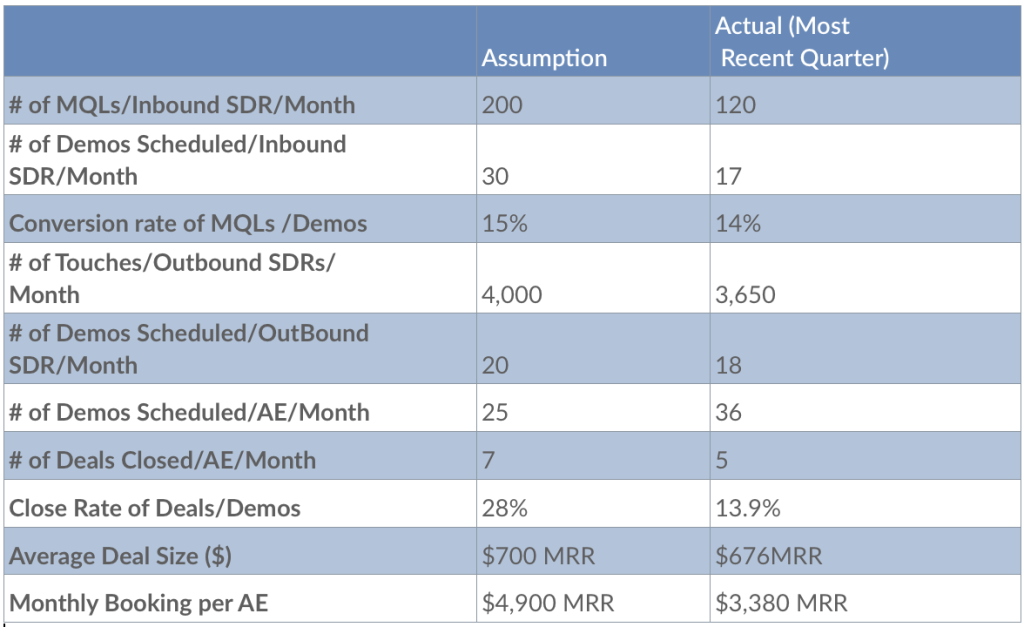
The above metrics show that the sales team is operating below capacity. To increase sales bookings and achieve better sales capacity usage, you need to consider:
– If your inbound SDRs are not consistently receiving 200 marketing qualified leads a month, you need to work with marketing on increasing the number of leads generated before adding additional inbound SDRs
– If the close rate of your AEs is less than 20%, then you are better off investing in coaching or training your reps to improve their effectiveness than hiring more AEs.
– If your outbound SDRs are not performing 200 touches a day, then ponying up for a sales acceleration tool or Power Dialer to consistently increase their activity levels is clearly a worthwhile investment.
Before ramping up your team, you also need to ensure that your sales model metrics are not skewed by one or two “superstar” reps who are masking poor performances by other reps.
The overall efficiency and effectiveness of your team will inevitably slip when you onboard new reps. That’s why the whole idea that you just expand your team and sales metrics will improve is flawed. You may have to do both: increase your sales capacity and improve the utilization of that increased capacity. But with that comes increased risk.
According to entrepreneur and tech venture capitalist Jason Lemkin, the best way to gauge the health of your startup is to monitor the production of qualified leads. Lemkin introduces the concept of “Lead Velocity Rate”, that is, your growth in qualified leads measured month over month. This argues that you shouldn’t increase the size of your sales team until you achieve aa Lead Velocity Rate that can support a larger team.
Growth is a Journey of increasing demand and capacity. Too many B2B Tech companies, especially venture back ones, make the mistake of increasing capacity without paying enough attention to improving the utilization and demand of their capacity. More often than not this does not translate into the expected growth in sales and meeting the sales plan.
by Mansour Salame | Dec 3, 2014 | Inside Sales, Sales Management, Sales Process, Startup Growth
In my last startup, I wanted to show my investors that we could double our revenues in the coming year. I treated this as a statistical exercise. I pulled out the spreadsheets and determined the total inside sales bookings we’d require every month to meet the target figure. I added 10% just in case (my personal insurance policy) and assigned this number to my inside sales manager.
In turn, my inside sales manager did something very similar with his team. He calculated the productivity of the reps in his current team and figured out the number of additional reps he would need to hit the assigned quota. Just to err on the side of caution, he added 20% to that quota. After doing all the calculations, we concluded we’d need 5 additional reps to double our revenue.
Since we’d just raised a round of funding, I thought it only prudent to hire the extra reps immediately so that we could be at our productive best within a year. Soon, we had our 5 extra reps, a solid product, and experienced managers at the helm. Things were looking good and I was confident we would hit our target sales bookings within a year.
I couldn’t have been more wrong.
Bad News: You Can’t Manage Inside Sales Bookings by Assigning Quotas
A few months into our sales scaling exercise, we quickly realized how hard it is to meet our monthly quotas consistently. Some months we would absolutely kill it, other months we would be treading water.
To me, these feast-or-famine swings were bewildering. After all, our sales process was very well defined, we continued to get the same number of leads every month, and our sales reps were top-notch performers. Yet, we struggled to meet our quotas consistently, month-over-month.
Good News: You Can Manage Activity
I spent many a sleepless night trying to figure out the underlying cause of our inconsistent performance. I couldn’t figure out why our results varied so much even when our product, capability and motivation remained the same.
For help, I turned to a friend who had run a very successful inside sales team.
“Mansour”, he asked me, “are you managing activity?”
“What do you mean by managing activity?”, I replied.
“I mean – are you managing the number of calls, demos, and emails for your inside sales team every day or week? Are you making sure that their activity supports their quota?” he asked again.
He then went on to explain how activity – performing a number of defined actions in the service of a goal (in this case, meeting the quota) – is the underlying catalyst for all sales. You can have the best sales team and the finest product, but unless you consistently take actions to meet your goal, you will not meet your quotas.
This was that ‘moment of epiphany’ entrepreneurs love to talk about. I suddenly realized I’d been looking at our sales process from a top-down perspective. I wanted to improve revenues, so I increased our target sales bookings, and to meet this increased target, I expanded the sales team. I never once considered that the sales team might not be doing enough activity consistently to meet the monthly quotas.
In short, I was embracing goals and processes, not the underlying actions that lead to those goals.
In short, I was embracing goals and processes, not the underlying actions that lead to those goals.
Treading a New Path: The Shortcut to Sales Success
Following the advice of my friend, we set out to define what level of activity we would require to meet our quota. We aligned this with our sales process and chose the following four activity metrics to track on a daily basis:
- Number of calls per day, per representative
- Average talk time per rep, per day
- Number of emails per day
- Number of demos this month
These were the four activities we identified as crucial to moving prospects through the sales process. If we could control these four activities, we realized we could not only sell more, but also sell more consistently.
After this, we set our activity quotas. We required each rep to make ‘X’ calls per day, send ‘Y’ emails per day, and for the sales manager to monitor ‘Z’ calls per day. We also put in place a reporting system that allowed our manager to monitor his team’s activity 3 times a day – once at 10am, once at 1pm, and once at the end of the day.
To my surprise, the reps loved the activity tracking system. They loved that they could get quantifiable data on their activity by the hour, and could use this data to improve their own performance.
The result: tracking our activity helped us push prospects down the sales pipeline. Instead of feast-or-famine, we consistently met our quotas. Within 12 months, we hadn’t just met our original sales bookings target, but even exceeded it.
Sales Bookings are a Function of Activity
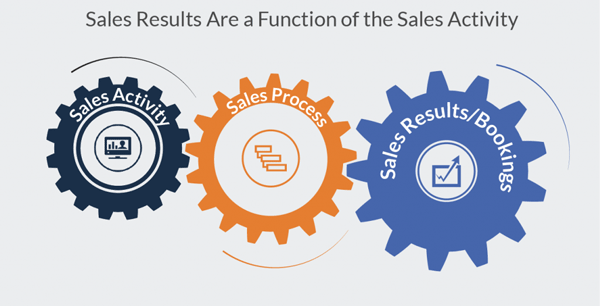
Over time, our activity tracking system became more sophisticated. We tracked a number of additional metrics that helped us pinpoint areas of improvement. Capturing this data was also a great way to benchmark reps against each other and help the team consistently strive for self-improvement.
We did much of this manually, but today, with inside sales software, we can completely automate activity tracking. Inside sales software with a power dialer can automatically log calls, talk time and emails and compile detailed reports for the same. With this data, you can get powerful insights into sales rep performance and activity metrics.
As my experience shows, managing activity metrics is the key to consistently meeting sales bookings quotas, and building a productive, motivated sales team.
Key Takeaway
For inside sales teams, you can’t manage bookings, but you can manage activity. In a well-designed sales process, managing activity will push prospects down the sales pipeline and help you meet your quotas in a consistent and predictable manner. I often read how managing activity and activity metrics is useless for inside sales teams. However, I found that managing activity and activity level is the best indicator of achieving inside sales booking goals even a better indicator than the number of leads or weighted pipeline.
by Mansour Salame | Oct 21, 2014 | Inside Sales, Sales Management, Sales Process, Startup Growth
How do you really get great B2B sales leads?
Hint: it’s not by spending gazillions of dollars on AdWords.
For all the attention SEM, social, content and email receive, referrals still remains one of the most powerful channels for generating leads and driving inside sales bookings.
I should know. I’ve been involved with companies where the top salespeople generated more than half their sales through referrals alone.
The principle behind referral sales is simple enough: you like a service, so you refer your friends to it. This is how businesses have grown organically since the first caveman realized he could barter his berries for a hunk of meat. In the absence of vast marketing budgets and armies of salespeople, this is how small businesses still drive their sales.
But in case, you need some actual statistical proof that referrals matter, I’ve got you covered:
- In a study of software buying trends, Capterra concluded that peer recommendations outweigh blogs and online media when it comes to researching software options.
- In a Wharton study of referral programs in a Frankfurt based bank, customers who referred their friends were 18% more likely to stick with the bank and generated 16 to 25% higher long-term value than ordinary customers.
- Depending on the industry, a referral business closes and converts nearly 70% of the time.
- In a survey of over 3,000 business people, more than half of the respondents said that they got 70% or more of their customers through referrals.
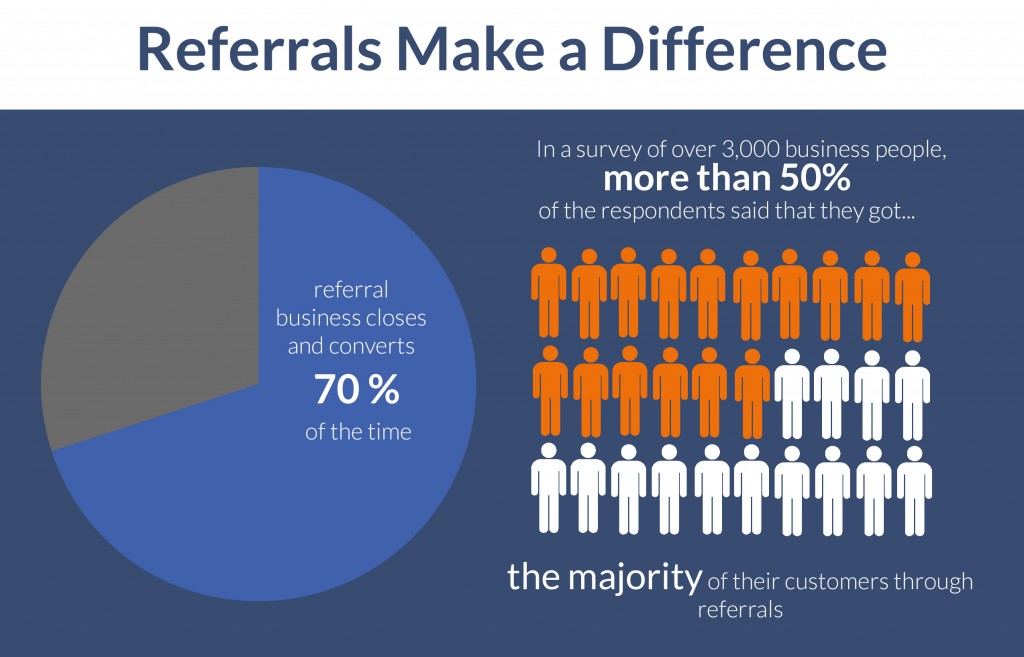
It’s Not Just About Numbers
For all the leads referrals help you generate and the sales they help you close, there are a few hidden benefits to referrals as well.
For one, referrals make your customers more loyal.
How?
Because when a customer refers an opportunity to your business, she is essentially saying “I’m putting my reputation on the line by referring my friends to you – and I trust you not to mess this up”.
“…[Customers that refer opportunities to your business] are far more likely to stick around, since they have their personal reputation at stake”
It also means that they are far more likely to stick around, since they have their personal reputation at stake. In my experience, it isn’t uncommon for customers to even call me to specifically ensure that we’re doing a good job for their referrals.
Second, a lack of referrals can give you valuable insight into your own business.
If a customer is unwilling to give you a referral, it could indicate that:
- They don’t intend to stick around long enough to prolong your existing relationship by pulling in their friends in as well (problem: poor customer service, product or lead quality).
- They don’t have a quick and easy way to direct referrals to your business (problem: poor referral system).
- That your product/service doesn’t wow them enough to refer their friends to it (problem: product quality).
In either situation, your customers’ unwillingness to provide referrals will tell you where you’re going wrong and what you can do to make your business better.
Three Methods to Increase Sales Referrals
This brings me to the next obvious question: how do you actually increase referrals?
As much as I’d like to say, “do X, sit back and watch the referrals roll in”, I can’t. Implementing a successful and sustainable referral program is hard work with trial and error.
Having said that, there are plenty of methods you can implement right away to increase your referrals.
Here are three of my favorites:
1. Reduce referral friction: By ‘referral friction’, I mean the amount of effort it takes for an existing customer to pass on referrals to you. Do customers have to hunt for a referral link, or is it readily accessible (say, in your email signature or in your site footer)? Does the referral program (if any) have a lengthy sign-up process? Do you have a specific page on your site for capturing leads from qualified referrals?
2. Offer referral incentives: This one is a bit tricky. You ideally want customers to refer to you because you make amazing products, not because you pony up cash for each referral. Yet, offering incentives in cash can dramatically increase the amount of referrals you get.
Tread lightly here, as it is very easy to lose your way and land a bunch of customers who come there just to reap the referral rewards.
One alternative is to offer incentives in the form of services or gifts instead of cash. This can potentially improve the quality of leads coming in through the referral system without costing you a whole lot of cash up front. Dropbox has a great implementation of this where you get extra space for every friend who signs up through your link.
3. Ask: Yes, I know it sounds crazy, but you’ll be surprised to know how many people will be happy to refer others to your business if you just go ahead and ask.
In fact, as per sales legend Dale Carnegie, 91% of customers say they’d happily give referrals, but only 11% salespeople actually ask for them.
So do this: dig through your order history to find the most loyal customers and shoot them a polite, honest email. Tell them that you’re trying to grow your business, and any referrals you can get will be appreciated. Reassure them that you’ll do your level best to keep these new referrals happy. Throw in an incentive or two if you must.
Adopt this three pronged approach and you just might be able to build yourself a scalable referral channel.
Key Takeaways
Based on the above, we can conclude that referrals are very important for B2B sales . We can also conclude that:
- Customers who refer others tend to be more loyal and generate more value in the long-term.
- A lack of referrals can reveal valuable insights about your product.
- To grow referrals, reduce ‘referral friction’, offer incentives, and implement a referral program.
- Often, asking directly for referrals is worth it.
- Above all, build a product customers will love referring to.
by Mansour Salame | Sep 10, 2014 | Inside Sales, Sales Management, Sales Process, Startup Growth
Contactual was my second Startup. I had recently sold my previous company, NextAge, and started Contactual. But unlike NextAge, which relied on a field sales model, Contactual was based primarily on an inside sales distribution model. We had validated our Customer Value Proposition and like most tech startups looking to grow their inside sales team, we were looking to implement Salesforce.com to support our Sales Process. Salesforce.com came with a predefined 14 stages Sales Process that looked something like this: Leads have four types of status:
- Open
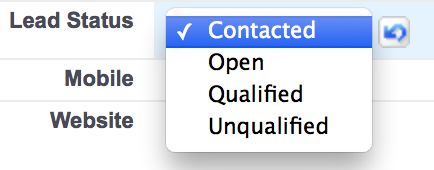
- Contacted
- Qualified
- Unqualified
Figure 1. Pre-Configured Lead Statuses in Salesforce
Opportunities have 10 stages:
- Prospecting
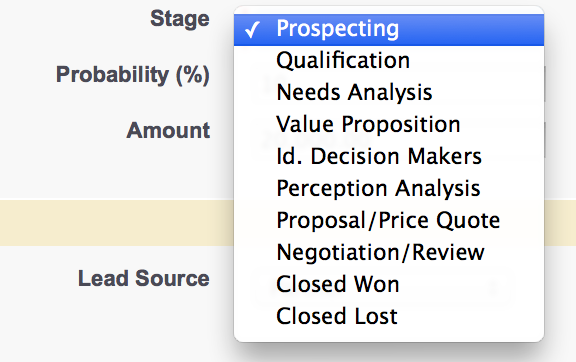
- Qualification
- Needs Analysis
- Value Proposition
- Identification Decision Makers
- Perception Analysis
- Proposal/Price Quote
- Negotiation/Review
- Closed – Won
- Closed – Lost
Figure 2. Pre-configured Opportunity Stages In Salesforce
The problem I had with the Salesforce.com predefined Sales Process was that I not only didn’t know what some of the stages meant, such as Perception Analysis, but I didn’t think the system worked for most B2B startups with an inside sales team. I don’t think Salesforce.com intends for any of its customers to implement their predefined Sales Process (it is just there as a preconfigured example). The sad thing is that most startups keep the predefined Sales Process the exact same way it came from Salesforce.com and never bother to modify it to reflect the specificities of their market, customers, company and product. I believe that every company that wants to build a successful B2B inside sales team has to build its very own Sales Process. The internet has changed the balance of power between the seller and the buyer. It used to be that buyers would rely on vendors to provide them with most of the information they would use to make a purchasing decision. Now with the internet the buyer has access to a lot of information before even contacting the vendor. Therefore the buyer determines the Sales Process by choosing the steps of his purchasing process, the Buyer’s Journey. Your sales process has to match your target market’s Buyer’s Journey. This forces you to analyze your target market and understand the way your prospects want to do business. Your sales cycle should make their journey easier and nudge them through the process. At Contactual, we started with an inside sales process that consisted of seven steps. Our initial sales process looked something like this:
- Inquiry
- Qualified Lead
- Prospect/Opportunity Development
- Quote Proposal/Negotiations
- Selected
- Closed – Won
- Closed – Lost
As we understood the behavior of our prospects better, we realized that some of the defined steps we were using were not objective and linked to key activity in the Buyer’s Journey (see Figure 3). In inside sales, it is important to define a clear sales process that promotes activity to move the prospects to the next stage in their Buyer’s Journey with no subjective steps. It has to be clear if an activity happens which stage your are in. It should not be a subjective decision to determine where a given deal is in the process.
“this not only increased the accuracy of our process and success rate but also sped up the Sales process as the rep was always focused on the next activity [in the inside sales process]”
We also realized that certain prospects would pause their Buyer’s Journey process, but might be interested in continuing the Journey later on. For them we added a new stage we called Nurture, which was where we would keep educating them with drip marketing, notifying them of new white papers, relevant webinars and touching them about once a month so that we would still stay on their minds.
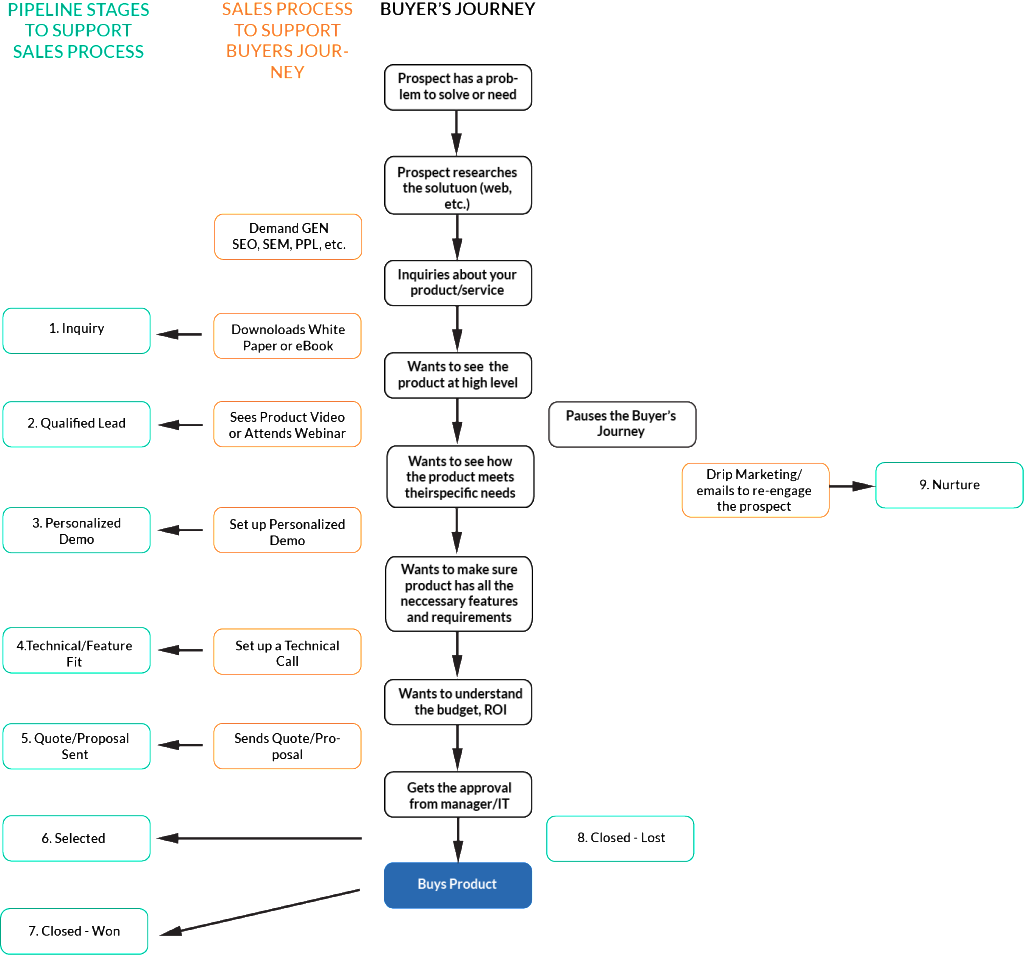
Figure 3. Mapping of the Sales Process to the Buyer’s Journey. Please click on the image to enlarge.
Our modified system was now:
- Inquiry
- Qualified Lead
- Personalized Demo
- Technical/Feature Fit
- Quote/Proposal Sent
- Selected
- Closed – Won
- Closed – Lost
- Nurture
As we understood better our Buyer’s Journey, we replaced Prospect/Opportunity with two steps specific to our Sales Process (Personalized Demo, Technical/Feature Fit). This made it clear that if our prospect participated in a personalized demo, they were in our third step and if they confirmed that our product met their feature requirements, they were now in the fourth step. We felt this not only increased the accuracy of our process and success rate, but also sped up the Sales Process as the rep was always focused on the next activity (i.e. get Technical/Feature Fit), send a quote, etc.. We finally had a predictable, scalable process that enabled us to hire more representatives on the team, train them, and have predictable bookings along with revenue growth. Again the above Sales Process was specific to one company. Each company should regularly spend time to understand its current prospects Buyer’s Journey and define and improve its own Inside Sales Process making each step objective, activity and event based in a way to have the sales reps always focused on the next step in the process that helps the buyer go through their journey faster and more easily.
by Mansour Salame | Aug 20, 2014 | Sales Management, Sales Process, Startup Growth
Here’s a scenario: you build a kick-ass product, sign up a few betas from your relationships, get Crunched, raise funding and promptly hire a VP of Marketing, a VP of Sales and a half a dozen sales people to scale your revenue.Your sales reps immediately get to work, dialing numbers and sending emails with the kind of gusto that would make Alec Baldwin’s character from Glengarry Glenn Ross seem like a two-bit huckster. Yet, despite the initial momentum (with the friendly Betas, that typically did not understand what they were buying), your sales flatline and your startup hits a brick wall. The sales people start blaming marketing (“We don’t have the right leads, or enough leads”), who start blaming the product guys (“The product is not addressing the market needs, it needs feature A and feature B”), and before you know it, you have an all-out war of attrition that leaves your investors antsy and your once-fledgling startup staring at the dark pits of the deadpool having spent most of your first round of funding.
As unlikely as this scenario may sound, in all my years of working in and with startups, I’ve found it to be all too common. Turns out, most startups do not have a validated Customer Value Proposition, that is one of the key reasons startup failure rates are so high.
What to Do When You Don’t Have a Validated Customer Value Proposition: Search for one!
One vital ingredient in a startup’s success is finding and validating a Customer Value Proposition that your target market is willing to pay for and that your product can deliver on.
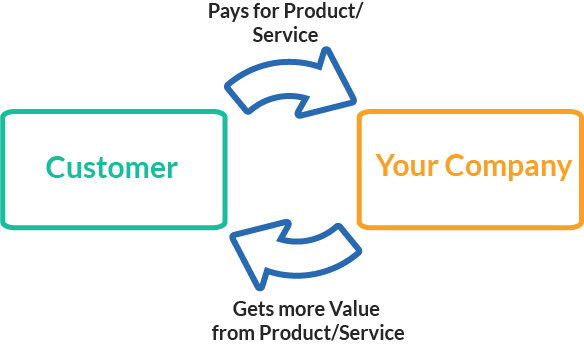
Figure 1. Validated Customer Value Proposition
Having a validated Customer Value Proposition is key to scaling your Startup’s revenues. Without it you cannot have a salable Customer Acquisition Model (reliable Demand Generation and repeatable Sales Process). This is exactly why bigger businesses are able to close thousands of sales each month: they have a Demand Generation and Sales Process that works. But it is important to note that a Startup is not a small version of a Bigger Company. A Bigger Company is optimized to ‘scale’ whereas a Startup is optimized to ‘search’. Don’t scale until you ‘searched’ and validated your Customer Acquisition Model.
“…a Startup is not a small version of a Bigger Company. A Bigger Company is optimized to ‘scale’ whereas a Startup is optimized to ‘search’

The first step, therefore, is admitting that you are in ‘search’ mode. The next step is to keep only a small team to do the search. Typically the founder, a sales rep and a marketing person are enough. Step three is to scrap all your existing sales and marketing material and meet with prospective customers.
Don’t just hypothesize; test your Customer Value Proposition to find out what your customers really want and are willing to pay for.
Here’s what a ‘search’ exercise might look like:
- The founder talks to dozens of customers to find out what they need and will pay for.
- Founder translates those new found needs into product features
- The tech team builds the missing features into the product.
- The remaining marketing person tests out new funnels and channels, emphasizing newly articulated value proposition to generate new leads
- The remaining sales rep works with the new leads, calibrates success rate against previous leads.
- Repeat, until you have a value proposition that allows you to sell customers (that are not your personal relationships)
You will have a validated Customer Value Proposition when you have closed sales with at least three customers that you did not know previously. Once you have validated your Customer Value Proposition, the next step is to ‘search’ for your Customer Acquisition Model, which includes reliable Demand Generation and a repeatable Sales Process (where the founder is no longer involved in every sale).

